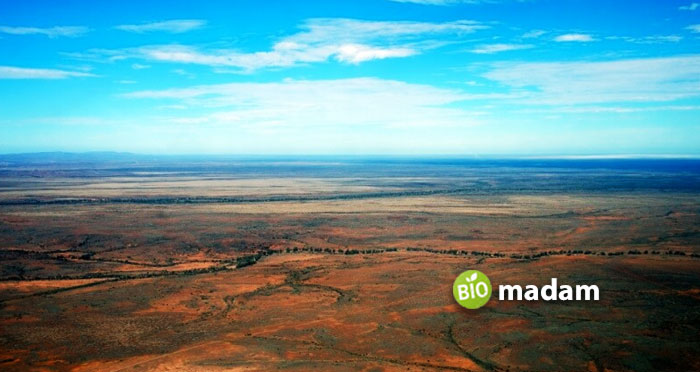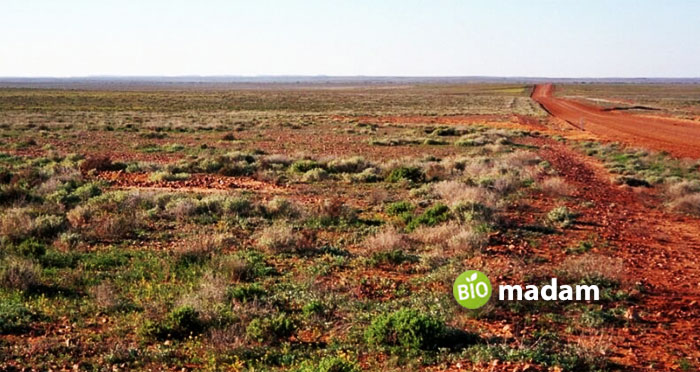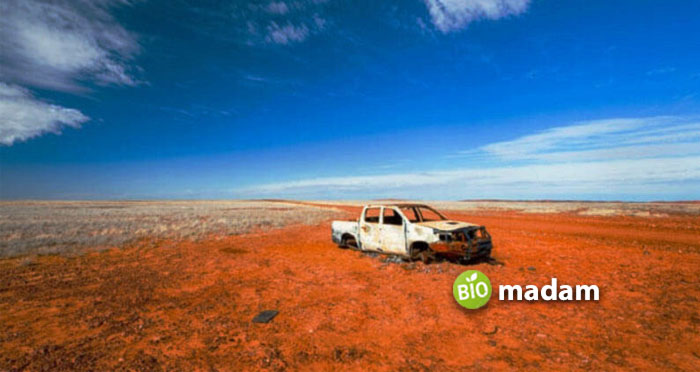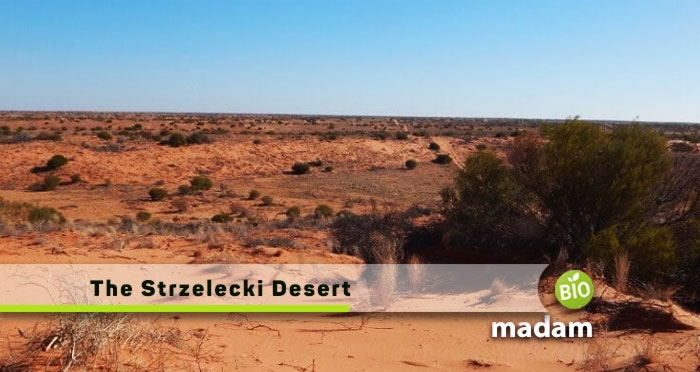The remote Strzelecki Desert of Australia holds many mysteries within its 40,000 square kilometers of dramatic arid landscape. From the unsolved disappearances of early European explorers to the unexplained natural phenomena found across its shifting dunes, this harsh environment conceals secrets that have intrigued adventurers and scientists for over a century. The local Aboriginal peoples passed down dreamtime tales full of magical beings who walked this land.
Today, researchers are still discovering unknown species that have adapted to survive in these dry grasslands and parched clay pans. For those willing to traverse its hot, waterless expanses, the Strzelecki Desert offers the chance to experience both the beauty and the mysteries of one of Australia’s top deserts with extreme wildernesses. This ancient place beckons the curious to come to unlock its many secrets.
Where is the Strzelecki Desert?
Starting with discussing the size of the Strzelecki Desert, this region spans over 40,000 square kilometers of arid wilderness in northeastern South Australia, the Strzelecki Desert boasts a diversity of dramatic landscapes. It is bordered by the ancient Flinders Ranges to the west and the Simpson Desert to the east. Within its borders, vast gibber plains of small pebbles stretch to the north, while fields of towering red sand dunes rise in the south. The aptly named Moon Plain features ripple marks etching the dusty surface. After rare rains, saltpans and claypans become temporary lakes reflecting endless blue skies.
This range of features has been shaped over eons by baking summer heat, frigid winter nights, and less than 150mm of annual rainfall. The Strzelecki’s harsh yet beautiful geography holds mysteries and adventures for those bold enough to traverse its inhospitable terrain.

Strzelecki Desert Flora and Fauna
Tucked away in eastern Australia, the Strzelecki Desert shows how plants and animals can thrive in extremely dry lands. This desert is part of the larger Strzelecki Desert System and has a special mix of hardy wildlife. Low shrubs blanket the ground while mulga trees and spinifex grasses grow across sandy dunes. Samphire shrubs sprout around clay pans. Iconic animals like red kangaroos, emus, and many birds are adapted to the tough desert conditions. They create a delicate balance in the unforgiving environment.
The rare stick-nest rat also lives here, building complex nests but facing threats in this fragile home. The Strzelecki Desert contains tough yet fascinating plants and animals that survive together in the dry landscape. Let’s explore the unique ecosystems that make this desert their home, with each species playing a part in the web of life.
Strzelecki Desert Plants
Low Shrubs: Diverse low shrubs, including saltbushes and acacias, thrive in arid conditions, providing essential ground cover and contributing to the desert’s hardy vegetation.
Mulga Woodlands: Mulga (Acacia aneura) forms expansive woodlands, showcasing its adaptability to low-water environments. These woodlands offer vital habitat and shade in parts of the Strzelecki Desert.
Spinifex Grasses: Spinifex grasses, with their tough and spiky leaves, cover sandy soils, providing ground cover and demonstrating their resilience in the challenging desert environment.
Samphire Shrubs: Salt-tolerant samphire shrubs thrive in areas with saline soils or near salt flats, adding to the botanical diversity of the Strzelecki Desert.
Eremophila Species: Various Eremophila species, also known as emu bushes or fuchsia bushes, contribute to the botanical richness of the desert, displaying adaptations to arid conditions.
Strzelecki Desert Animals
Red Kangaroos: The iconic red kangaroos, with specialized physiological adaptations for water conservation, roam the Strzelecki Desert, symbolizing the resilience of the desert’s fauna.
Emus: Flightless emus, the world’s second-largest bird, forage through the arid expanses, showcasing their adaptability to the challenging conditions of the desert.
Lizards and Snakes: Diverse lizard species, such as bearded dragons and monitors, find habitat in the Strzelecki Desert. Snake species like the Centralian Carpet Python are adapted to the arid environment.
Bird Species: Parrots, falcons, and eagles contribute to the desert’s avian diversity, soaring above the landscape and playing essential roles in the ecosystem.
Stick-nest Rat: The stick-nest rat (Leporillus conditor), a rare and endangered species, constructs nests made of sticks. It faces threats from climate change and human activity, highlighting the challenges that some desert species encounter.

Human History & Land Use
The Strzelecki Desert holds archaeological evidence of indigenous habitation dating back over 20,000 years, with the Dieri, Yawarrawarrka, and Yandruwandha tribes leaving their mark on this ancient landscape. European exploration, beginning in the 1840s, saw the infamous Burke & Wills expedition crossing the desert in 1861. Mineral exploration since the 1950s has unearthed valuable resources such as oil, natural gas, and uranium, leading to ongoing mining activities. Today, the desert sees tourism activities like four-wheel driving, hiking, and camping, allowing adventurers to immerse themselves in this unique environment.
Tourist Attractions and Activities in the Strzelecki Desert
In today’s world, the Strzelecki Desert invites adventurers to unlock its mysteries along the Birdsville and Strzelecki Tracks. Here’s how you can make the most of your journey while respecting this fragile environment:
Four-Wheel Drive Adventures: Embark on a thrilling four-wheel-drive expedition, conquering the desert’s undulating dunes along the historic Strzelecki Track. Feel the exhilaration of navigating this unique landscape, balancing challenge and excitement.
Hiking Trails: For a grounded exploration, hit the hiking trails that reveal the subtleties of the Strzelecki. Guided or self-guided, these trails immerse you in the tranquility of the desert, offering encounters with its captivating flora and elusive fauna.
Camping Under the Stars: As the sun sets, camp beneath the vast desert sky. Enjoy the magic of a night in the Strzelecki, surrounded by silence and stars. Camp responsibly, leaving no trace but footprints and taking away memories.
Stewardship and Conservation: Be a responsible traveler. Respect the environment by sticking to designated trails, adhering to camping regulations, and disposing of waste properly. Contribute to the preservation of this delicate ecosystem for future generations.
Educational Programs: Deepen your connection with the desert by engaging in educational programs. Learn about the rich cultural and ecological heritage from local authorities or indigenous guides, gaining insights into sustainable practices that have thrived for centuries.
Challenges Facing the Strzelecki Desert Climate and Ecosystem
The Strzelecki Desert grapples with pressing environmental issues that jeopardize its delicate equilibrium and the well-being of the Strzelecki Desert population. The region contends with threats from mineral and petroleum exploration, infrastructure development, traditional cattle grazing, and the escalating impacts of climate change. Balancing sustainable development practices becomes paramount to safeguard the fragile ecosystem of this arid landscape.
One of the foremost concerns lies in the proliferation of introduced predators, including red foxes and feral cats, posing significant threats to the local fauna and disrupting the natural balance. The encroachment of invasive species, particularly buffel grass, compounds the challenges, underscoring the urgency for effective conservation measures.
Human activities, such as water extraction and diversion, further strain the intricate ecosystem of the Strzelecki Desert. Striking a judicious balance between conservation efforts and developmental needs emerges as a critical imperative for ensuring the enduring preservation of the desert’s exceptional biodiversity, even as mining activities contribute to the region’s economic landscape. In navigating this complex landscape of challenges, a proactive and sustainable approach becomes paramount for the long-term resilience of the Strzelecki Desert’s ecological tapestry.

Strzelecki Desert Facts
Explore the facts and mysteries of this remote landscape, from vanished explorers to unexplained happenings, as the desert continues to unveil its secrets to intrigued adventurers:
- The Strzelecki Desert has a mysterious past. Some early European explorers disappeared in the huge, shifting sands. No one knows what happened to them. This gives the desert an air of mystery.
- The desert also has unexplained natural happenings. Odd things occur in the moving dunes and on the Moon Plain. This strange charm makes people want to explore the desert and find out more.
- Local Aboriginal peoples passed down dreamtime tales about the desert. The stories tell of magical beings that walked the land long ago. This adds a magical feel to the already fascinating desert.
- Researchers keep finding new species living in the dry grass and clay pans. The desert still holds secrets that science is only starting to uncover.
- The desert has archaeological treasures from over 20,000 years ago. The Dieri, Yawarrawarrka and Yandruwandha tribes left their mark here. This is part of the desert’s ancient human history.
- It’s challenging to explore the remote, rugged Strzelecki Desert. But adventurers can experience the desert’s raw natural beauty and solitude.
Conclusion
The Strzelecki Desert stands as a testament to the awe-inspiring tenacity of life. This ancient landscape holds a wealth of natural wonders and cultural heritage. For the intrepid traveler, a journey here promises adventure and discovery. However, its fragile ecosystems face mounting challenges. As custodians, we must tread lightly, protecting its magic for generations to come. The secrets of the Strzelecki await respectful exploration. This desert’s enduring mysteries can inspire our shared humanity if we have the wisdom to listen.

As a freelance journalist, copywriter, and editor, Rachel Truman crafts compelling stories across travel, food, family, lifestyle, and B2B. With a keen eye for detail, Rachel specializes in creating engaging branded content, making every word an adventure

